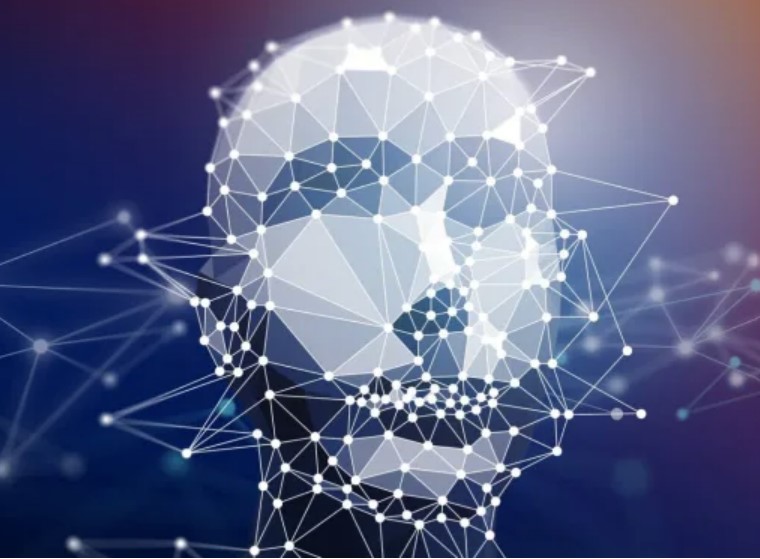
The enigma of life's inception remains one of the most profound questions challenging the scientific community. The pursuit to unravel this mystery has led researchers to consider the early Earth's complex chemical landscape, where inanimate substances like water and methane underwent a transition, birthing the very first living cells. This remarkable transformation, believed to have occurred over 3.5 billion years ago, is a process scientists posit could have happened on countless planets across the cosmos. The central dilemma lies in the elaborate nature of even the simplest life forms. Bacteria, for instance, boast an intricate network of over a hundred genes and a plethora of molecules engaging in a dynamic biochemical ballet. The primeval Earth presented a theater of chaos, with a rich diversity of chemicals stirred into action by elemental forces such as volcanic eruptions and fierce winds, painting a complex picture for life's origins. Wilhelm Huck from Radboud University speaks to the vast "experimental parameter space," hinting at the limitless combinations and conditions that could have fostered life. Amid this complexity, modern scientists are turning to artificial intelligence (AI) to sift through the enormity of data and discern patterns far beyond human analytical capacity. This new frontier is spearheaded by the use of machine learning, which is adept at parsing through extensive and disordered datasets to highlight promising conditions that foster complexity. These digital tools hold the promise of compressing decades of research into a shorter span, guiding us toward a universal theory that not only elucidates the origins of life on Earth but could apply to extraterrestrial realms as well.
The story of life's origins is intricately tied to chemistry. Leroy "Lee" Cronin from the University of Glasgow underscores the pivotal role chemistry plays in answering these quintessential human curiosities. The field's rich history dates back to the iconic 1953 experiment by Stanley Miller, who, under Harold Urey's supervision, simulated Earth's primordial conditions. His setup yielded glycine, a fundamental amino acid, setting a precedent for the potential of relatively unsupervised chemical processes to edge closer to life. Despite the groundbreaking nature of Miller's work, the complexity it unveiled posed significant challenges. In the years that followed, "prebiotic" chemistry experiments became more refined, synthesizing a wider array of life's building blocks, albeit under highly controlled conditions far removed from the randomness of early Earth. The goal now is to revisit the spirit of Miller's experiment, leveraging machine learning to navigate the labyrinth of uncontrolled chemical interactions.

The narrative of Ian Clatworthy from Hitachi Vantara is a testament to the transformative power of data in the high-stakes world of Formula 1 racing. His journey, spanning nearly a decade, reveals a saga where the integration of IT services into the motorsport arena revolutionized the field. Clatworthy's experience with Mitsubishi Ralliart and Honda Racing, two titans of the racing world, provided him with a front-row seat to the digital metamorphosis in this competitive sport.
This transformation is vividly captured in the upcoming Hulu and Disney+ documentary "Brawn: The Impossible F1 Story," which chronicles the Brawn GP team's underdog triumph in the Formula 1 World Championship. Despite its short lifespan and limited financial resources, the team's strategic use of data propelled them to victory. Clatworthy's role in this team exemplifies how technology can overturn expectations and redefine success. Reflecting on the early days, Clatworthy recalls the nascent stage of IT in motorsports, where even bending rules was part of the game to ensure that engineers had rapid access to crucial car data. This ingenuity was the precursor to a pivotal shift in the 2000s when IT teams became a staple at racing events, affirming the belief that technology could be leveraged to gain a competitive edge.

by Jonathan Sawaya — Beirut (AFP) Lebanon's Hezbollah has been trading daily cross-border fire with its sworn enemy Israel as war rages in Gaza, with the Iran-backed group deploying a large weapons arsenal amassed over decades. AFP looks at the Shiite Muslim group's firepower and how it has expanded since it fought a war with Israel in 2006.
- Armed and dangerous -
Hezbollah is the only Lebanese faction to have retained its weapons after the end of Lebanon's 1975-1990 civil war, and is now considered to have a more powerful stockpile than the national army. It is also the most powerful group in the "axis of resistance" -- an alliance of Tehran-supported groups mainly in Iraq, Syria, Yemen and the Palestinian territories. The 2006 Israel-Hezbollah war killed more than 1,200 people in Lebanon, mostly civilians, and 160 in Israel, largely soldiers. Since then, "Hezbollah has robustly expanded the quantity and the quality of its arsenal," said Dina Arakji from Control Risks consultancy. "The group in 2006 reportedly had about 15,000 rockets, while estimates over the past couple of years suggest that this number has multiplied by almost 10 times," she said. The group has also gained significant combat experience after years of fighting on the side of President Bashar al-Assad in Syria's civil war. Skirmishes on the Lebanon-Israel border began on October 8, one day after Hamas attacks against Israel sparked war, but so far Hezbollah has largely limited itself to targeting sites near the Israeli border. Hezbollah chief Hassan Nasrallah has repeatedly said his group holds advanced weaponry capable of striking deep into Israeli territory.
- Fighters and tunnels -

by Louis Columbus @LouisColumbus VentureBeat presents: AI Unleashed - An exclusive executive event for enterprise data leaders. Hear from top industry leaders on Nov 15. Reserve your free pass DevOps teams rely more on AI-coding assistants to boost team productivity by automating coding tasks with only the most conscientious scanning final code for security flaws, Forrester warns in their 2024 cybersecurity, risk, and privacy predictions. The research and advisory firm predicts inconsistent compliance and governance practices combined with many Devops teams experimenting with multiple AI-coding assistants simultaneously to increase productivity will lead to flawed A.I. code responsible for at least three publically-admitted breaches in 2024. Forrester also warns that A.I. code flaws will pose API security risks.
AI-coding assistants are redefining Shadow I.T.
49% of business and technology professionals with knowledge of AI-coding assistants say their organizations are piloting, implementing, or have already implemented them in their organizations. Gartner predicts that by 2028, 75% of enterprise software engineers will use A.I. coding assistants, up from less than 10% in early 2023. Devops leaders tell VentureBeat it’s common to find multiple AI-coding assistants being used across teams as the pressure to produce a high volume of code every day is growing. Tighter timelines for more complex coding combined with the proliferation of over 40 AI-coding assistants available is leading to a new form of shadow I.T. where Devops teams switch from one A.I. assistant to another to see which delivers the highest performance for a given task. Enterprises are struggling to keep up with the demand from their Devops teams for new AI-coding tools approved for use corporate-wide.
CISOs face a challenging balancing act in 2024
Khazen History


Historical Feature:
Churches and Monasteries of the Khazen family

St. Anthony of Padua Church in Ballouneh
Mar Abda Church in Bakaatit Kanaan
Saint Michael Church in Bkaatouta
Saint Therese Church in Qolayaat
Saint Simeon Stylites (مار سمعان العامودي) Church In Ajaltoun
Virgin Mary Church (سيدة المعونات) in Sheilé
Assumption of Mary Church in Ballouneh
1 - The sword of the Maronite Prince
2 - LES KHAZEN CONSULS DE FRANCE
3 - LES MARONITES & LES KHAZEN
4 - LES MAAN & LES KHAZEN
5 - ORIGINE DE LA FAMILLE
Population Movements to Keserwan - The Khazens and The Maans
ما جاء عن الثورة في المقاطعة الكسروانية
ثورة أهالي كسروان على المشايخ الخوازنة وأسبابها
Origins of the "Prince of Maronite" Title
Growing diversity: the Khazin sheiks and the clergy in the first decades of the 18th century
Historical Members:
Barbar Beik El Khazen [English]
Patriach Toubia Kaiss El Khazen(Biography & Life Part1 Part2) (Arabic)
Patriach Youssef Dargham El Khazen (Cont'd)
Cheikh Bishara Jafal El Khazen
Patriarch Youssef Raji El Khazen
The Martyrs Cheikh Philippe & Cheikh Farid El Khazen
Cheikh Nawfal El Khazen (Consul De France)
Cheikh Hossun El Khazen (Consul De France)
Cheikh Abou-Nawfal El Khazen (Consul De France)
Cheikh Francis Abee Nader & his son Yousef
Cheikh Abou-Kanso El Khazen (Consul De France)
Cheikh Abou Nader El Khazen
Cheikh Chafic El Khazen
Cheikh Keserwan El Khazen
Cheikh Serhal El Khazen [English]
Cheikh Rafiq El Khazen [English]
Cheikh Hanna El Khazen
Cheikha Arzi El Khazen
Marie El Khazen